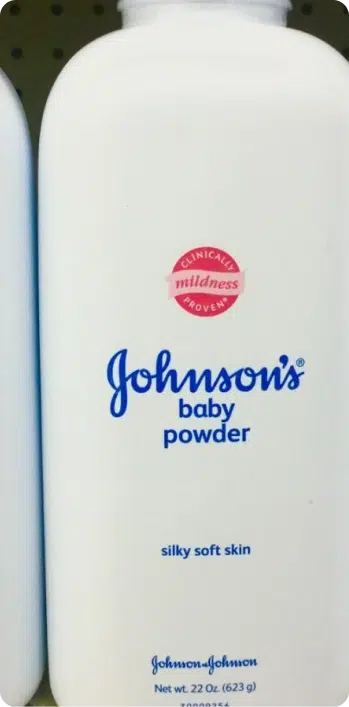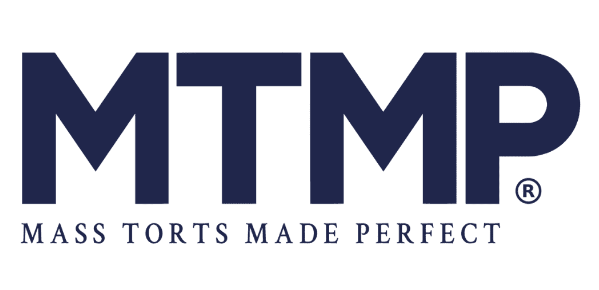Automatic Stay Extended By The U.S. Bankruptcy Court of New Jersey in February 2022
Talc ovarian cancer litigation involves thousands of claims filed by women who say talcum powder products made by Johnson & Johnson, J&J, caused them to develop ovarian cancer. According to the lawsuits, talc manufacturers knew or should have known about the risk yet failed to warn the public. Some of the lawsuits say talcum powder contaminated with asbestos, a known carcinogen, is to blame.
Women with ovarian cancer who used Johnson’s Baby Powder and Shower-to-Shower products continue filing talc ovarian cancer lawsuits in state courts and in federal multidistrict litigation in New Jersey. The talcum powder litigation has been going on for several years. So far, plaintiffs who filed cases in state courts have won billions in verdicts, and the defense has appealed a few of them. The defense has also won a few cases.
In October 2021, J&J dumped all its debt and liability into a company called LTL Management LLC. LTL immediately filed for bankruptcy and the bankruptcy judge has temporarily halted talcum powder litigation until early 2022.
This page provides a Johnson & Johnson talcum powder litigation update along with some major litigation milestones.
January 2023 Update
In a significant reversal of the lower court’s rulings, the Third Circuit Court of Appeals dismissed LTL Management’s bankruptcy filing on January 30, 2023. The decision was based on the grounds that LTL Management, LLC is in financial distress and lacks the required good faith to file such a claim. This is a significant win for the 37,520 plaintiffs who are still active in the MDL. Johnson & Johnson has vowed to appeal.
On September 19, 2022, plaintiffs involved in the talc litigation against Johnson & Johnson asked the Third Circuit to dismiss LTL Management, LLC’s bankruptcy on the grounds that the Johnson & Johnson subsidiary is a “concocted” entity established for the sole purpose of preventing them from having their day in court. The Third Circuit agreed, stating, “Applied here, while LTL faces substantial future talc liability, its funding backstop plainly mitigates any financial distress foreseen on its petition date.”
The attorneys general of Mississippi and New Mexico, with the backing of 41 states and the District of Columbia, attempted to move forward with lawsuits against Johnson & Johnson on the basis that Johnson & Johnson violated consumer protection laws by misleading consumers about the safety of its talc products.
On October 4, 2022, U.S. Bankruptcy Judge Michael Kaplan paused these lawsuits pending the Third Circuit ruling. The states objected to this on the grounds that the bankruptcy court did not have the authority to pause their lawsuits because the state lawsuits are enforcements of the law rather than damages lawsuits. These lawsuits should move forward in light of the ruling.
Johnson & Johnson is also fighting against the talc litigation on another front. On January 18, 2023, LTL Management, LLC filed a disparagement lawsuit against three of the doctors who connected their product to mesothelioma and ovarian cancer. The Johnson & Johnson subsidiary filed a similar case against another doctor last month.
Among LTL Management, LLC’s allegations is that the doctors falsely claimed that talc products were the only source of asbestos exposure by the patients in their studies. It also calls the credibility of the scientific journals where the studies were published into question, claiming there were conflicts of interest and a lack of transparency.
Johnson & Johnson announced in August that it will stop selling talc-based products globally in 2023 more than two years after stopping sales in the United States. The company will substitute cornstarch for talc.
August 2022 Update
After the temporary suspension of baby powder cancer lawsuits against Johnson & Johnson in November 2019, a federal judge in February 2022 ruled that LTL Management, LLC could proceed with the bankruptcy, despite critics calling the move a “bad-faith effort to shield J&J itself from responsibility for an allegedly harmful product.”
Plaintiffs said they would appeal Judge Michael Kaplan’s decision. David Skeel, a bankruptcy and corporate law professor at the University of Pennsylvania Law School told NPR that, if successful, this move by J&J “does have enormous implications for liability exposure going forward.”
In May, the U.S. Court of Appeals for the Third Circuit agreed to hear appeals. The court will consider the decision by a New Jersey bankruptcy court that denied the plaintiffs’ motion to dismiss LTL Management’s Chapter 11 case.
It will also review Judge Kaplan’s preliminary injunction, which prohibited litigation against non-debtor defendants.
December 2021 Update in J&J Talc Lawsuits
As of December 15, 2021, there were 37,447 lawsuits against Johnson & Johnson pending in multidistrict litigation in New Jersey before Chief Judge Freda L. Wilson. Cases in MDL No. 2738 have yet to go to trial.
In October 2021, J&J transferred all of its talcum powder liability into a company called LTL Management, LLC. Shortly after, LTL filed for bankruptcy in North Carolina. Other companies with asbestos liability have previously used this controversial move called the “Texas two-step bankruptcy.”
J&J will use the newly created bankrupt company to house talc-related debt and avoid liability. After filing for bankruptcy, LTL requested a stay of all talcum powder lawsuits while it navigates the bankruptcy proceedings.
The health care giant claims that its bankruptcy move is legitimate. According to NPR, J&J’s CFO, Joseph Wolk, defended it in a November 2021 call with investors. He called it “an established process that allows companies facing abusive tort systems to resolve claims in an efficient and equitable manner.”
Critics of the move say it robs plaintiffs of the right to face the company in court. In a November 2021 letter, the Senate Judiciary Committee appealed to J&J to abandon the bankruptcy maneuver so “tens of thousands of consumers can have their fair day in court.”
However, the judge in the bankruptcy proceedings granted LTL a limited 60-day stay of talcum powder lawsuits against J&J and ruled that the debtor move the bankruptcy case to New Jersey, where most of the talcum powder lawsuits are. The new company includes a $2 billion trust.
Major Milestones in J&J Talc Ovarian Cancer Cases
Juries have been awarding talcum powder lawsuit verdicts against J&J since 2016. Many of these verdicts included hefty amounts for punitive damages. Some of the milestone talc ovarian cancer verdicts for plaintiffs include:
- In a November 2016 jury case, a woman who was given a 20% chance of surviving her ovarian cancer received a $70 million jury award, and $65 million was for punitive damages.
- A May 2016 jury awarded $55 million to a woman being treated for ovarian cancer in November 2016.
- In February 2016, a jury ruled that Johnson & Johnson’s talcum powder was responsible for the death of a woman. Her estate received $72 million, of which $62 million were for punitive damages.
- A 2017 Los Angeles jury awarded $417 million to a woman dying from Stage 4 ovarian cancer. The verdict included $340 million in punitive damages.
- A May 2017 St. Louis, Missouri jury awarded a woman $110 million. She was being treated for aggressive ovarian cancer that metastasized to her liver. The woman used baby powder for over 40 years.
- In 2018, a jury trial resulted in a $4.7 billion award meant to compensate 22 plaintiffs. However, Johnson & Johnson appealed based on jurisdictional issues. The Missouri Court of Appeals reduced the award to $2.12 million for five of the 22 cancer victims.
- In October 2020, Johnson & Johnson agreed to settle 1,000 lawsuits against the company for cancer caused by its talc products. The plaintiffs received $100 million.
Despite trial losses, a $100 million settlement, and pulling their talc products off the shelves in the United States and Canada, Johnson & Johnson still maintains that their talc products do not contain asbestos and do not cause cancer.
What’s Next for J&J Talc MDL Lawsuits?
After the 60-day break for LTL’s bankruptcy proceedings, litigation should begin again in New Jersey in front of Judge Freda L. Wolfson in 2022.
In July 2021, Judge Wolfson set a tentative date for the first of the MDL bellwether trials to begin in April 2022. As of December 2021, that date hasn’t been moved.
In November 2021, Bloomberg reported that plaintiffs have rejected any settlement talks thus far, and the judge assigned to LTL’s bankruptcy said that he would wait to order mediation.
J&J Failed to Overturn $2 Billion Missouri Verdict
Johnson & Johnson appealed to the Supreme Court to overturn a $2 billion award that was already reduced from $4.7 billion. Still denying any wrongdoing, Johnson & Johnson argued that it removed talc products from shelves because of “fueled by misinformation around the safety of the product and a constant barrage of litigation and advertising.”
Ken Starr, who represented the plaintiffs (respondents in the Supreme Court), argued that Johnson & Johnson knew that their talc powders contained asbestos for decades. He also argued that the company’s scientists suggested using cornstarch in 1973, but the company was unwilling to use it because talc was cheaper.
Johnson & Johnson’s attorney argued that health organizations and federal regulators rejected the warnings on talc. He also cited studies that concluded that talc was not associated with ovarian cancer in those who used the product.
The Supreme Court refused to hear J&J’s appeal and the verdict was upheld.

Connection Between Talc and Ovarian Cancer
Studies have found that women who use talcum powder on a regular basis have about a 30% higher chance of developing ovarian cancer. If doctors find ovarian cancer early enough, the five-year survival is 93%. However, because ovarian cancer does not have a screen test, doctors rarely catch it early enough. If the cancer metastasizes, the survival chances drop to 30%.
Of the 21,000 women estimated to receive a new ovarian cancer diagnosis, nearly 14,000 will die because of it. With regular use of talcum powder, the chance of developing ovarian cancer increases. The International Agency for Research on Cancer stated that, “there is an unusually consistent increased chance of developing ovarian cancer among women who reported using talcum powder in the genital area.”
Additionally, researchers looking at the association between talcum powder use and cancer found that those who used talcum powder and have ovarian cancer typically have one type of epithelial ovarian cancer – serous carcinoma.
When talc is mined, it has impurities that must be calcined before it is safe for humans to use. One of the naturally occurring impurities is sometimes asbestos. If the calcining process does not remove all of the asbestos, it finds its way into talcum powder products. In addition to ovarian cancer, asbestos-contaminated talc has been linked to mesothelioma.
Preparing Claims for Settlement
If your firm needs help getting claims prepared for settlement, click the button below to get in touch. The Case Works Talcum Powder Team is specially trained to work with cancer victims and their families to maximize the value of their claims. As a seamless extension of your firm, our Talcum Powder Team will ensure your clients receive exceptional service and the care they deserve. We can help your firm get claims proved and ready to settle.





